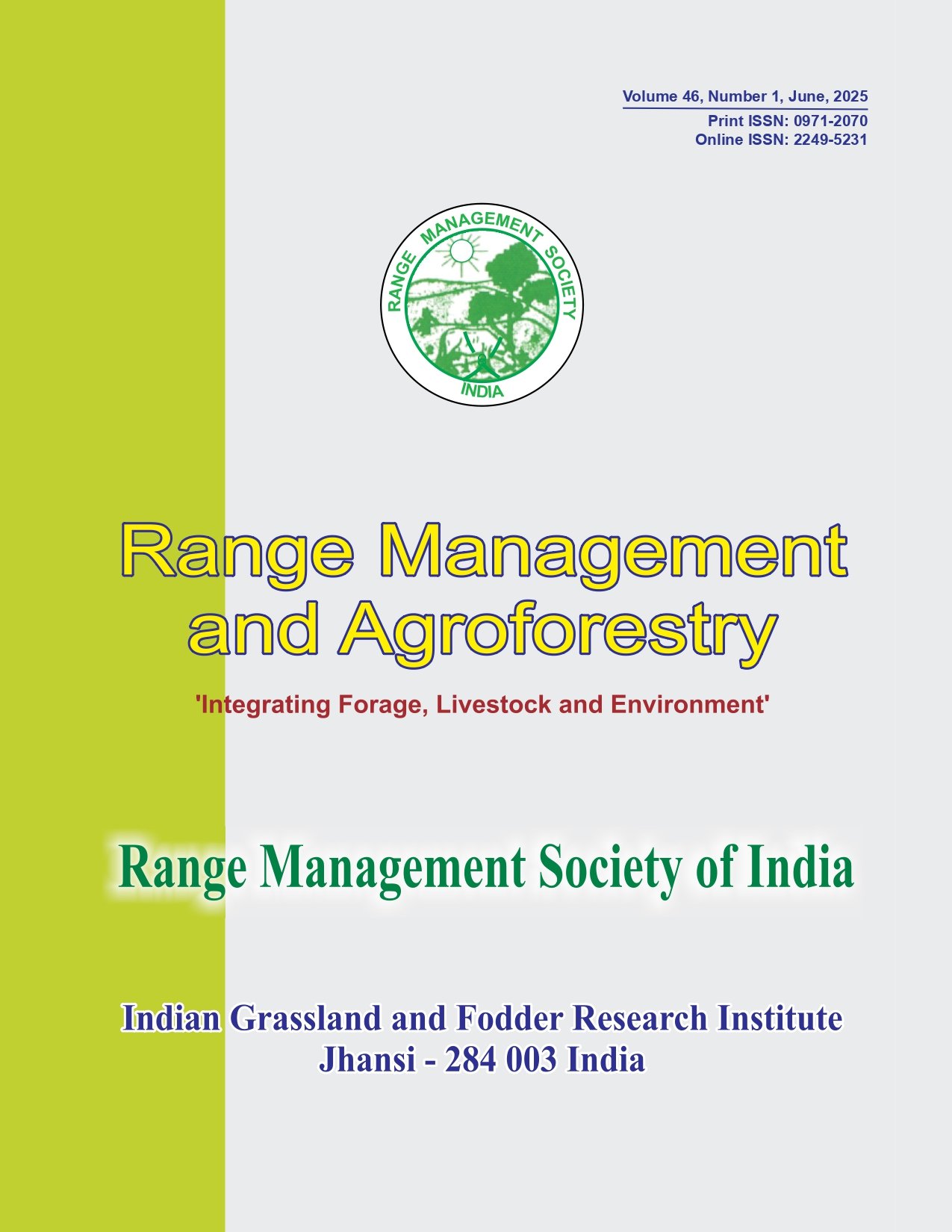Influence of detopping practices on green fodder availability, seed yield and economics of fodder maize (Zea mays L.) in central and southern plateau regions of India
Keywords:
Detopping, Economics, Fodder maize, Green fodder, Seed yieldAbstract
The unavailability of adequate quality seeds and green fodder during the lean period together affects livestock productivity in the country. Hence, it is necessary to assure the availability of quality seeds for sowing and green fodder to feed the livestock. To study this, field experiments were conducted on fodder maize at two locations in the country. Treatments included four detopping (DT) practices viz., T1 : no DT, T2 : DT at 10 days after (DA) 50% silking, T3 : DT at 20 DA 50% silking and T4 : DT at 30 DA 50% silking. Results demonstrated that DT at 10, and 20 DA 50% silking is not advisable in fodder maize for seed production as it considerably reduced the biomass accumulation (252.4-254.5 g/plant) and leaf relative water content (44.79-63.95%). However, no DT produced the highest growth attributes and green fodder yield followed by DT at 30 DA 50% silking which was at par with no DT regarding 100 seed weight (23.01 g) and seed yield (2725 kg/ha) with an additional green fodder yield (3245 kg/ha). Thus, no DT followed by DT at 30 DA 50% silking favored the economics of fodder maize seed production (gross return, net return, and benefit-cost ratio). Regarding locations, Dharwad (Karnataka) outperformed Jhansi (Uttar Pradesh) regarding growth, seed yield attributes, and the economics of fodder maize. Therefore, DT at 30 DA 50% silking could supply additional green fodder (3245 kg/ha) with a 14% compromise in the seed yield of fodder maize.




